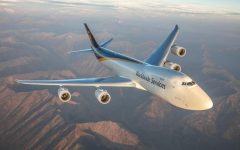 DHL Global Forwarding partnered with Schneider Electric to design and launch an industry-first multi-modal shipping model, using sustainable aviation fuels (SAFs) to help improve the agility and reduce the environmental impact of its supply chain. Together with Schneider Electric, DHL Global Forwarding has deployed two multi-modal shipping bridges – between Singapore and North America and between India and North America – to reduce Scope 3 carbon emissions from air freight. In total, Schneider Electric plans to design and execute eight global multi-modal bridges with its logistics partners that can be deployed on demand. Schneider Electric estimates that these bridges, by using a combination of air and sea transport, will reduce the carbon emissions of these regional shipment lanes by up to 40% compared to normal air fulfillment. Since the start of the pilot in March 2023, both the Singapore to North America bridge and the India to North America bridge operated in partnership with DHL Global Forwarding, have seen up to 20% carbon emission reduction. Schneider Electric and DHL Global Forwarding’s new pilot schemes have allowed the two partners to test multi-modal shipping as a business-as-usual process on demand. Orders are delivered with agility and flexibility, either by air freight or multi-modal shipping, depending on capacity, air surges, margins, customer offers, and stock availability. Building on this end-to-end capability, the model is further enhanced with DHL Global Forwarding offering the use of SAF via its GoGreen Plus service, leading to deliveries generating up to 90 percent less carbon emissions and being and self-sustaining. This gives Schneider Electric the agility to plan, decide, procure, execute, and govern the model, achieving a more resilient and agile supply chain.
DHL Global Forwarding partnered with Schneider Electric to design and launch an industry-first multi-modal shipping model, using sustainable aviation fuels (SAFs) to help improve the agility and reduce the environmental impact of its supply chain. Together with Schneider Electric, DHL Global Forwarding has deployed two multi-modal shipping bridges – between Singapore and North America and between India and North America – to reduce Scope 3 carbon emissions from air freight. In total, Schneider Electric plans to design and execute eight global multi-modal bridges with its logistics partners that can be deployed on demand. Schneider Electric estimates that these bridges, by using a combination of air and sea transport, will reduce the carbon emissions of these regional shipment lanes by up to 40% compared to normal air fulfillment. Since the start of the pilot in March 2023, both the Singapore to North America bridge and the India to North America bridge operated in partnership with DHL Global Forwarding, have seen up to 20% carbon emission reduction. Schneider Electric and DHL Global Forwarding’s new pilot schemes have allowed the two partners to test multi-modal shipping as a business-as-usual process on demand. Orders are delivered with agility and flexibility, either by air freight or multi-modal shipping, depending on capacity, air surges, margins, customer offers, and stock availability. Building on this end-to-end capability, the model is further enhanced with DHL Global Forwarding offering the use of SAF via its GoGreen Plus service, leading to deliveries generating up to 90 percent less carbon emissions and being and self-sustaining. This gives Schneider Electric the agility to plan, decide, procure, execute, and govern the model, achieving a more resilient and agile supply chain.
Breaking News
- Global air freight rates decline 0.6% last week: TAC Index
- One Air delivers outsize cargo shipment to Abu Dhabi
- ‘Train workforce to adopt & thrive in tech-driven world’
- Delhi Airport to expand cargo city to boost trade
- Active Freight Logistics opens custom bonded facility at BLR
- IATA unveils SAF matchmaking platform
- ‘Global air cargo tonnages rebounds partially: WorldACD
- CCI unveils ‘Trans Africa’ to boost cross border logistics
- DHL Express expands logistics infra at BIAL
- ‘High-value and sensitive goods should have insurance coverage’
- ‘Monsoon Enabled’ terminal infrastructure must in Inda
 Cargo Breaking News
Cargo Breaking News


